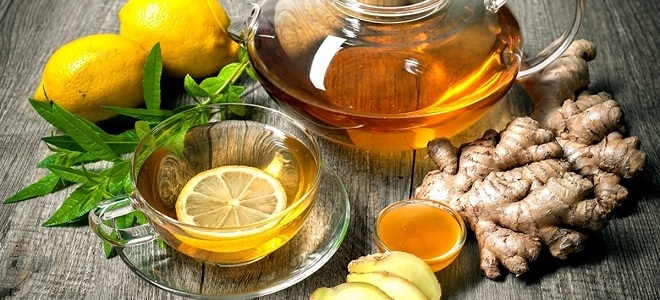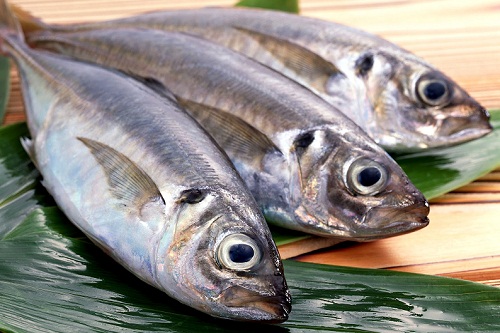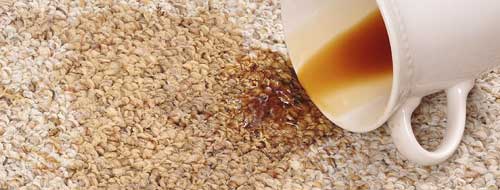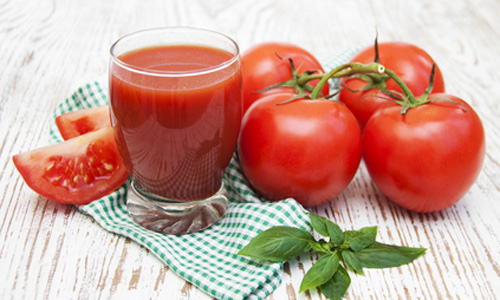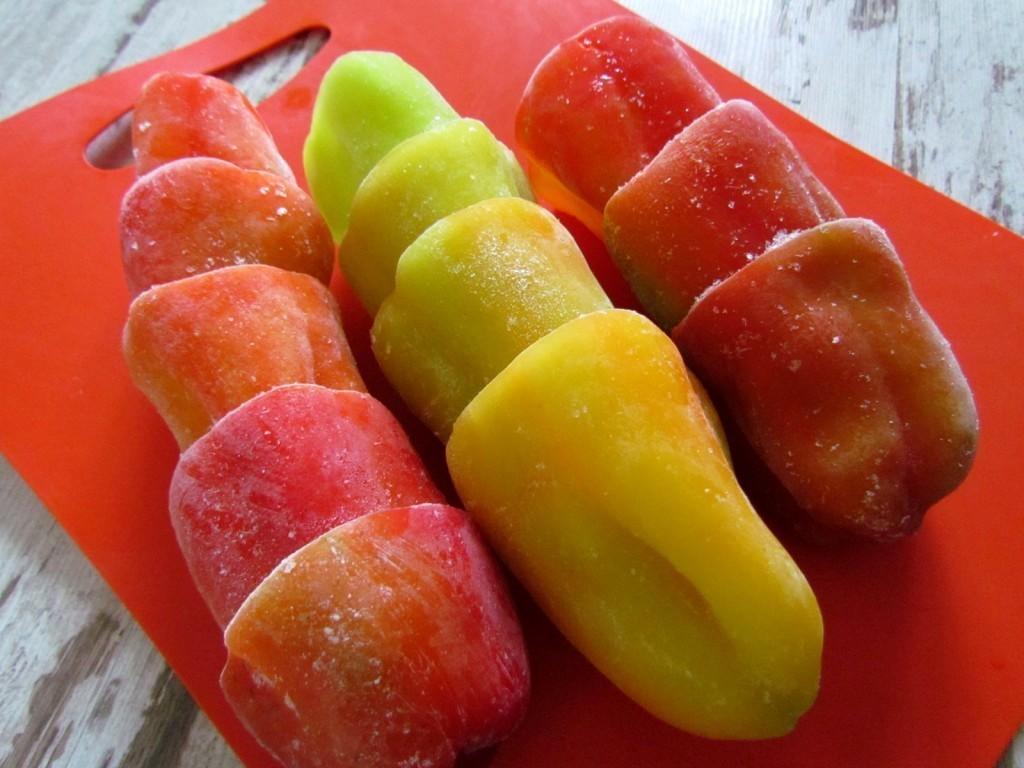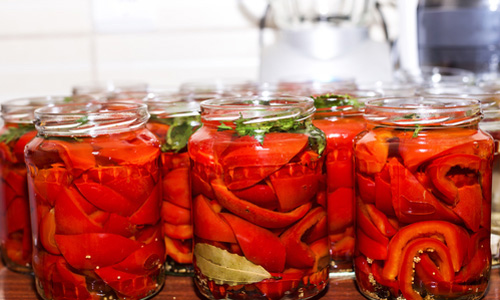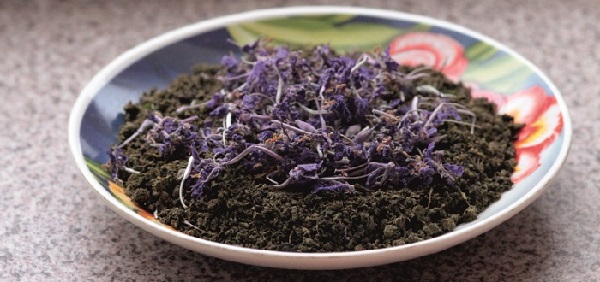Traditional Siberian cuisine. Dishes of traditional Siberian cuisine
For a long time, the peoples of Siberia fed on the gifts of the taiga and lake. The cooked dishes were not diverse, but were nutritious and practical. Hunters and fishermen know many exotic recipes for cooking at the stake, using hot stones and coals. The extracted meat and fish were smoked, dried and salted for the future. For the winter, stocks were made of berries and mushrooms. The combination of fish, game and taiga seasonings distinguishes the Siberian table from European cuisine.
These differences are most pronounced during meals on the shore of Lake Baikal, but some dishes can also be tried in the restaurant.
The salted Baikal omul became a special local highlight, the fame of its delicate taste is known far beyond Siberia.

There are different ways of salting it in gutted and gutted form, depending on the recipe and the time that has passed since the day of salting, the taste of the fish also changes greatly. Freshly salted omul is so tender that several tails eat it at a time, even those who usually avoid fish. Among gourmets, it is valued as the perfect appetizer for chilled vodka.
Many tourists try to take the Baikal omul to their relatives and friends at the hotel. For transportation, it is recommended to buy cold-smoked omul and pack it in paper, rather than in plastic bags, so as not to “suffocate”.
Recipes from Baikal fishermen
Dry ambassador
The omul is steamed and thoroughly cleaned, washed with running cold Baikal water, sprinkled with salt, an additional pinch of salt gills the inside of the gills and head, back and sides. Small-sea fishermen prefer coarse grinding salt for salting, because the fine salt dissolves quickly, and the surface of the fish turns out to be more salted than the inside (uneven salting). It is preferable to use a wooden container, but in its absence enameled containers are suitable. In a wooden or other container, the fish fits tightly head to tail, tail to head, incised belly up so that the brine that remains remains in the fish. Each row of fish laid and manually salted inside is additionally sprinkled with salt. The container filled with fish is crushed from above with a load, put under oppression (cargo) to give brine (brine). It is best to crush with stones that do not oxidize in brine. There are two types of salting: the "peasant ambassador" is gutted fish and the "culture" is not gutted fish. Gourmets consider the taste of fish "cultural salting" more refined, because in their opinion, due to the preservation of the entrails, the fish turns out to be more salty and aromatic than gutted. Salt fish can be stored in glaciers all summer. After 1-1.5 days, light-salted omul can be eaten. The delicate taste of slightly salted omul is especially appreciated on the 2nd day after salting.
For drying, a spread of slightly salted fish is stretched on wooden torches, piercing the fish across them, and suspended in a dry, ventilated place. Wooden torches should not be resinous, so as not to spoil the taste of the fish.

Where to buy: you can try light-salted omul in the form of a dish in any restaurant in Irkutsk, in a cafe on the Baikal highway, or purchase it on the Baikal coast in tourist places - Listvyanka, Kultuk, MRS, in the village of Khuzhir (Olkhon Island)
Cold smoked omul

Lightly salted fish is taken (1.5 days) and washed well in running Baikal water from the remains of brine and coarse salt. The fish is dried on a roll (hanged head down so that excess fluid flows out). Then it is hung in the shade in a ventilated area for 1-2 days. With proper drying, the surface of the fish becomes dry, but the internal moisture remains in the fish, so the fish is obtained after smoking golden. If the surface of the fish is not dried properly, the fish turns brown when smoked. For smoking, a wooden box is made in the ground, sawdust is poured into it to smolder. The smoke must be cooled, for this the pipe from the duct is laid 3-4 meters in the ground so that the smoke has cooled. Smoke passing from the duct through the chimney precipitates combustion products on the walls of the chimney during cooling, and as a result, cold smoke without soot enters the smokehouse with fish. The smoker should be tight. The continuous process of smoldering sawdust (usually pine) lasts 2-3 days.
Smoked fish

For hot smoking, it is recommended to use firewood in the bark (fruit species: apple tree, bird cherry). Birch is not used due to the presence of tar, which gives the fish bitterness. It is advisable to eat the cooked fish immediately from the fire until the hot juice has gone (usually in the first 20 minutes of cooking). Storage time is limited, so hot-smoked fish should not be taken for long-term storage or long-term transportation. When you try to save hot smoked fish for a long time (almost a boiled fish), the fish breaks and crumbles during transportation, so it is not recommended to take it, for example, for transportation to Moscow.
Where can I buy: in the central market of Irkutsk in the fish rows, in Listvyanka (you can on the market, but you can drive deep into the aftermath and take it from the locals cheaper and fresher;), in the village. Kultuk on a serpentine, in the village of Khuzhir on the island of Olkhon.
Omul on the birth
This is a traditional recipe for cooking fish by Baikal fishermen. The fish is cooked in the heat from the coals of a fire.

It is strung on wooden pricks with their heads down, but their tail is not pierced so that the fish does not slip over the prick during cooking, when it heats up. Roes with fish are stuck obliquely at an angle above the corners of the fire and periodically rotate so that the fish warms up evenly. Previously, 3-4 oblique cuts from the ridge to the belly are made in the fish scales, so that the fish is better salted and fried. The surface of the notched fish is rubbed with salt. The tree for the horn is selected so that it holds the temperature well and does not carbonize (larch). The tree must be dry and not resinous, otherwise the fish will take on the smell of tar. The fishes for fish in their own juice (not fired fish) must have a thinner working portion of the horn so that fish can be cut through from head to tail. For fish flocks, the horns are made wider, in 1.5-2 fingers, so that the fish does not fall apart. The horn is pushed along the ridge to the touch, determining not to damage the gallbladder. A large fish that cannot be completely planted on the rampage is cut in half or in large pieces and, in parts, is mounted on the horns. In properly cooked fish, scales from pulp are easily separated. Depending on the cooking recipe, the fish can be cooked not gutted in its own juice or cut into large pieces. The taste of the fish can differ greatly from the method and time of preparation. It is advisable to eat fish immediately, with the heat of the fire.
Where you can try: it’s almost impossible to buy omul on ready-made roasted fish, but to appreciate the great taste and see the preparation of this dish by local fishermen is easy when traveling to Olkhon Island. It’s easy to cook it yourself at the stake.

Fresh fish is thoroughly cleaned of scales, gutted, washed with blood in running water, cut into two halves along the ridge, all bones are separated and cut into 3-4 cm slices. The prepared fish pieces are immersed in strong saline solution (1 glass of salt per 1 liter cold boiled water) for 20 minutes. After that, the fish is thrown into a colander so that the saline solution is stacked and finely chopped onions, black pepper, and vegetable oil are added to it. Everything is mixed, densely packed in glass jars, and the finished product in the jars is cleaned in the refrigerator. You can eat food immediately after cooking. The taste of fish varies depending on the amount of spices and oil; you can fill it with vegetable or olive oil with the addition of various spices to taste, among which mayonnaise and mustard. Especially delicious is the omul and whitefish prepared according to this recipe.
In addition, fish with flat expanded plastics can be pickled in olive oil (soaked for 30 minutes). You can also not separate the bones.
Where to try: try this dish from omul or whitefish in any restaurant in Irkutsk, as well as in a cafe on the Baikal tract.
Georgians
Fish rolls on Olkhon: a dough sheet is prepared like dumplings, separately minced fish with salt and onion. Stuffing is wrapped in a roll, as in the preparation of pancakes and then cut into small pieces - "Georgians".

The sliced \u200b\u200brolls are fried and served with melted hot oil. It is also common to cook cutlets and dumplings from minced fish, and toasting large pieces of fish in the dough.

Stuffed Fish in Foil
Carefully cleaned fresh fish is stuffed with herbs and various spices, among which may be lemon juice, tomato paste, a weak solution of vinegar, red pepper, green or wild onions, wild garlic, mayonnaise, cheese. Stuffed fish is placed in the foil with the incised belly up, so that the juice that does not flow out during cooking. It is wrapped in two or three layers of foil and laid on a grill over the corners of the fire until fully cooked.

Where to try: you can try this dish in any restaurant in Irkutsk, as well as in a cafe on the Baikal tract.
Chopped
The fish frozen to a solid state is beaten on all sides by a solid object.

After this, the skin of the fish is easily removed, and the frozen pulp is easily torn and separated from the bones. Slices of frozen fish are consumed raw, dipped in a mixture of salt and black pepper.

Where to try: try this whitefish dish in any restaurant in Irkutsk, as well as in a cafe on the Baikal tract.
A real Baikal fish soup with smoke, fish on the horns, hot smoked fish or cooked according to a special recipe: red-hot stones in open fish can be truly appreciated and tasted only by the fire during a trip to Lake Baikal. Exotic Baikal dinner includes a weak bonfire, several old newspapers with a simple table, a blackened pot of boiled potatoes, a bunch of wild garlic and a lot of lightly salted omul. All this goes well with Baikal Vodka, the winner of the 1995 World Strong Drinks Championship.
Siberian dishes
Siberian dumplings and meat "in the Siberian" are widely known. In the old days, hunters, leaving for the taiga in winter, took frozen dumplings with them in canvas bags, which were enough to throw in boiling water and after they surfaced, the dish with large and fragrant dumplings was ready. In most restaurants, you can order dumplings prepared according to a more complex recipe: in bone broth with liver, in pots covered with freshly baked flat cake. Toasted dumplings are also very tasty.
A feature of the preparation of meat "in Siberian", "in taiga" are taiga seasonings of fern and wild garlic, which are rolled into the meat. Baked potatoes and frozen berries, often cranberries or cranberries, are served with meat.

Hunters, according to one of the recipes, cut wild meat in thin long pieces, coolly pour salt, mix in a pot and string on wooden torches or branches. Arches of meat are stuck around the coals of a bonfire and the meat is dried in smoke. Meat prepared in this way is stored for a long time in the summer. While moving, slices of meat are good to nibble to maintain strength and restore the lack of salts in the body.
The menu of Irkutsk restaurants includes traditional dishes of Russian cuisine - soups, borscht, meatballs, pancakes and purely Siberian dishes - game, dumplings, mushroom soups, taiga meat, omul dishes.
Fried omul and grayling are available at most restaurants.
Siberian homemade cuisine is very different from the restaurant menu. As a rule, many pickles are harvested at home for the winter. If you visit Siberians, there will be home-made pickles on the table; tomatoes in their own juice, cucumbers, cabbage, pickled mushrooms and mushrooms, pickled butter, home-made squash caviar, taiga jam. Sauerkraut is sometimes cooked with lingonberries or cranberries. Less often you can find a salad of fern and wild garlic.
And, of course, a table is inconceivable without traditional pies. Pies can be of the most intricate shape and with various fillings: with lingonberries, fish, wild garlic, rice, mushrooms and eggs.
Traditionally, a lingonberry drink or fruit drink is put on the table. Add sea buckthorn or lingonberry to tea.
Local people value salted omul the most. In the summer, they prefer omul on the horns.
Buryat cuisine
Drilled traditional food, as a rule, is easy to manufacture and nutritious, meat and dairy dishes prevail. Buryat poses are especially popular in Siberia and especially widespread on Lake Baikal.

For their preparation, minced minced meat is made from pork, lamb, and beef. Stuffing rolls into the dough so that there is a hole for steam at the top. Poses are quickly steamed boiling fat in a closed pan. Hot molten fat is stored inside the poses, so be careful when trying them for the first time. Rarely, but still can be found in the villages of Tarasun - an alcoholic tonic drink of milk, which has a specific smell, and salamat - a dairy product made from high-quality sour cream on fire, with the addition of salt, flour and cold water when boiling.
And such exotic things as stroganin (raw frozen roe deer meat) or chopped meat (raw frozen Baikal fish), which are used raw with spices, can be tasted only in winter during hunting or fishing. Avoid trying bear meat, even heat-treated meat, if there is no veterinary expertise.
November 7th, 2013, 08:23 pm
For a long time, the peoples of Siberia fed on the gifts of the taiga and lake. The cooked dishes were not diverse, but were nutritious and practical. Hunters and fishermen know many exotic recipes for cooking at the stake, using hot stones and coals. The extracted meat and fish were smoked, dried and salted for the future. For the winter, stocks were made of berries and mushrooms. The combination of fish, game and taiga seasonings distinguishes the Siberian table from European cuisine.
These differences are most pronounced during meals on the shore of Lake Baikal, but some dishes can also be tried in the restaurant.
The salted Baikal omul became a special local highlight, the fame of its delicate taste is known far beyond Siberia.

There are different ways of salting it in gutted and gutted form, depending on the recipe and the time that has passed since the day of salting, the taste of the fish also changes greatly. Freshly salted omul is so tender that several tails eat it at a time, even those who usually avoid fish. Among gourmets, it is valued as the perfect appetizer for chilled vodka.
Many tourists try to take the Baikal omul to their relatives and friends at the hotel. For transportation, it is recommended to buy cold-smoked omul and pack it in paper, rather than in plastic bags, so as not to “suffocate”.
Recipes from Baikal fishermen
Dry ambassador
The omul is steamed and thoroughly cleaned, washed with running cold Baikal water, sprinkled with salt, an additional pinch of salt gills the inside of the gills and head, back and sides. Small-sea fishermen prefer coarse grinding salt for salting, because the fine salt dissolves quickly, and the surface of the fish turns out to be more salted than the inside (uneven salting). It is preferable to use a wooden container, but in its absence enameled containers are suitable. In a wooden or other container, the fish fits tightly head to tail, tail to head, incised belly up so that the brine that remains remains in the fish. Each row of fish laid and manually salted inside is additionally sprinkled with salt. The container filled with fish is crushed from above with a load, put under oppression (cargo) to give brine (brine). It is best to crush with stones that do not oxidize in brine. There are two types of salting: the "peasant ambassador" is gutted fish and the "culture" is not gutted fish. Gourmets consider the taste of fish "cultural salting" more refined, because in their opinion, due to the preservation of the entrails, the fish turns out to be more salty and aromatic than gutted. Salt fish can be stored in glaciers all summer. After 1-1.5 days, light-salted omul can be eaten. The delicate taste of slightly salted omul is especially appreciated on the 2nd day after salting.
For drying, a spread of slightly salted fish is stretched on wooden torches, piercing the fish across them, and suspended in a dry, ventilated place. Wooden torches should not be resinous, so as not to spoil the taste of the fish.

Where to buy: you can try light-salted omul in the form of a dish in any restaurant in Irkutsk, in a cafe on the Baikal highway, or purchase it on the Baikal coast in tourist places - Listvyanka, Kultuk, MRS, in the village of Khuzhir (Olkhon Island)
Cold smoked omul

Lightly salted fish is taken (1.5 days) and washed well in running Baikal water from the remains of brine and coarse salt. The fish is dried on a roll (hanged head down so that excess fluid flows out). Then it is hung in the shade in a ventilated area for 1-2 days. With proper drying, the surface of the fish becomes dry, but the internal moisture remains in the fish, so the fish is obtained after smoking golden. If the surface of the fish is not dried properly, the fish turns brown when smoked. For smoking, a wooden box is made in the ground, sawdust is poured into it to smolder. The smoke must be cooled, for this the pipe from the duct is laid 3-4 meters in the ground so that the smoke has cooled. Smoke passing from the duct through the chimney precipitates combustion products on the walls of the chimney during cooling, and as a result, cold smoke without soot enters the smokehouse with fish. The smoker should be tight. The continuous process of smoldering sawdust (usually pine) lasts 2-3 days.
Smoked fish

For hot smoking, it is recommended to use firewood in the bark (fruit species: apple tree, bird cherry). Birch is not used due to the presence of tar, which gives the fish bitterness. It is advisable to eat the cooked fish immediately from the fire until the hot juice has gone (usually in the first 20 minutes of cooking). Storage time is limited, so hot-smoked fish should not be taken for long-term storage or long-term transportation. When you try to save hot smoked fish for a long time (almost a boiled fish), the fish breaks and crumbles during transportation, so it is not recommended to take it, for example, for transportation to Moscow.
Where can I buy: in the central market of Irkutsk in the fish rows, in Listvyanka (you can on the market, but you can drive deep into the aftermath and take it from the locals cheaper and fresher;), in the village. Kultuk on a serpentine, in the village of Khuzhir on the island of Olkhon.
Omul on the birth
This is a traditional recipe for cooking fish by Baikal fishermen. The fish is cooked in the heat from the coals of a fire.

It is strung on wooden pricks with their heads down, but their tail is not pierced so that the fish does not slip over the prick during cooking, when it heats up. Roes with fish are stuck obliquely at an angle above the corners of the fire and periodically rotate so that the fish warms up evenly. Previously, 3-4 oblique cuts from the ridge to the belly are made in the fish scales, so that the fish is better salted and fried. The surface of the notched fish is rubbed with salt. The tree for the horn is selected so that it holds the temperature well and does not carbonize (larch). The tree must be dry and not resinous, otherwise the fish will take on the smell of tar. The fishes for fish in their own juice (not fired fish) must have a thinner working portion of the horn so that fish can be cut through from head to tail. For fish flocks, the horns are made wider, in 1.5-2 fingers, so that the fish does not fall apart. The horn is pushed along the ridge to the touch, determining not to damage the gallbladder. A large fish that cannot be completely planted on the rampage is cut in half or in large pieces and, in parts, is mounted on the horns. In properly cooked fish, scales from pulp are easily separated. Depending on the cooking recipe, the fish can be cooked not gutted in its own juice or cut into large pieces. The taste of the fish can differ greatly from the method and time of preparation. It is advisable to eat fish immediately, with the heat of the fire.
Where you can try: it’s almost impossible to buy omul on ready-made roasted fish, but to appreciate the great taste and see the preparation of this dish by local fishermen is easy when traveling to Olkhon Island. It’s easy to cook it yourself at the stake.

Fresh fish is thoroughly cleaned of scales, gutted, washed with blood in running water, cut into two halves along the ridge, all bones are separated and cut into 3-4 cm slices. The prepared fish pieces are immersed in strong saline solution (1 glass of salt per 1 liter cold boiled water) for 20 minutes. After that, the fish is thrown into a colander so that the saline solution is stacked and finely chopped onions, black pepper, and vegetable oil are added to it. Everything is mixed, densely packed in glass jars, and the finished product in the jars is cleaned in the refrigerator. You can eat food immediately after cooking. The taste of fish varies depending on the amount of spices and oil; you can fill it with vegetable or olive oil with the addition of various spices to taste, among which mayonnaise and mustard. Especially delicious is the omul and whitefish prepared according to this recipe.
In addition, fish with flat expanded plastics can be pickled in olive oil (soaked for 30 minutes). You can also not separate the bones.
Where to try: try this dish from omul or whitefish in any restaurant in Irkutsk, as well as in a cafe on the Baikal tract.
Georgians
Fish rolls on Olkhon: a dough sheet is prepared like dumplings, separately minced fish with salt and onion. Stuffing is wrapped in a roll, as in the preparation of pancakes and then cut into small pieces - "Georgians".

The sliced \u200b\u200brolls are fried and served with melted hot oil. It is also common to cook cutlets and dumplings from minced fish, and toasting large pieces of fish in the dough.

Stuffed Fish in Foil
Carefully cleaned fresh fish is stuffed with herbs and various spices, among which may be lemon juice, tomato paste, a weak solution of vinegar, red pepper, green or wild onions, wild garlic, mayonnaise, cheese. Stuffed fish is placed in the foil with the incised belly up, so that the juice that does not flow out during cooking. It is wrapped in two or three layers of foil and laid on a grill over the corners of the fire until fully cooked.

Where to try: you can try this dish in any restaurant in Irkutsk, as well as in a cafe on the Baikal tract.
Chopped
The fish frozen to a solid state is beaten on all sides by a solid object.

After this, the skin of the fish is easily removed, and the frozen pulp is easily torn and separated from the bones. Slices of frozen fish are consumed raw, dipped in a mixture of salt and black pepper.

Where to try: try this whitefish dish in any restaurant in Irkutsk, as well as in a cafe on the Baikal tract.
A real Baikal fish soup with smoke, fish on the horns, hot smoked fish or cooked according to a special recipe: red-hot stones in open fish can be truly appreciated and tasted only by the fire during a trip to Lake Baikal. Exotic Baikal dinner includes a weak bonfire, several old newspapers with a simple table, a blackened pot of boiled potatoes, a bunch of wild garlic and a lot of lightly salted omul. All this goes well with Baikal Vodka, the winner of the 1995 World Strong Drinks Championship.
Siberian dishes
Siberian dumplings and meat "in the Siberian" are widely known. In the old days, hunters, leaving for the taiga in winter, took frozen dumplings with them in canvas bags, which were enough to throw in boiling water and after they surfaced, the dish with large and fragrant dumplings was ready. In most restaurants, you can order dumplings prepared according to a more complex recipe: in bone broth with liver, in pots covered with freshly baked flat cake. Toasted dumplings are also very tasty.
A feature of the preparation of meat "in Siberian", "in taiga" are taiga seasonings of fern and wild garlic, which are rolled into the meat. Baked potatoes and frozen berries, often cranberries or cranberries, are served with meat.

Hunters, according to one of the recipes, cut wild meat in thin long pieces, coolly pour salt, mix in a pot and string on wooden torches or branches. Arches of meat are stuck around the coals of a bonfire and the meat is dried in smoke. Meat prepared in this way is stored for a long time in the summer. While moving, slices of meat are good to nibble to maintain strength and restore the lack of salts in the body.
The menu of Irkutsk restaurants includes traditional dishes of Russian cuisine - soups, borscht, meatballs, pancakes and purely Siberian dishes - game, dumplings, mushroom soups, taiga meat, omul dishes.
Fried omul and grayling are available at most restaurants.
Siberian homemade cuisine is very different from the restaurant menu. As a rule, many pickles are harvested at home for the winter. If you visit Siberians, there will be home-made pickles on the table; tomatoes in their own juice, cucumbers, cabbage, pickled mushrooms and mushrooms, pickled butter, home-made squash caviar, taiga jam. Sauerkraut is sometimes cooked with lingonberries or cranberries. Less often you can find a salad of fern and wild garlic.
And, of course, a table is inconceivable without traditional pies. Pies can be of the most intricate shape and with various fillings: with lingonberries, fish, wild garlic, rice, mushrooms and eggs.
Traditionally, a lingonberry drink or fruit drink is put on the table. Add sea buckthorn or lingonberry to tea.
Local people value salted omul the most. In the summer, they prefer omul on the horns.
Buryat cuisine
Drilled traditional food, as a rule, is easy to manufacture and nutritious, meat and dairy dishes prevail. Buryat poses are especially popular in Siberia and especially widespread on Lake Baikal.

For their preparation, minced minced meat is made from pork, lamb, and beef. Stuffing rolls into the dough so that there is a hole for steam at the top. Poses are quickly steamed boiling fat in a closed pan. Hot molten fat is stored inside the poses, so be careful when trying them for the first time. Rarely, but still can be found in the villages of Tarasun - an alcoholic tonic drink of milk, which has a specific smell, and salamat - a dairy product made from high-quality sour cream on fire, with the addition of salt, flour and cold water when boiling.
And such exotic things as stroganin (raw frozen roe deer meat) or chopped meat (raw frozen Baikal fish), which are used raw with spices, can be tasted only in winter during hunting or fishing. Avoid trying bear meat, even heat-treated meat, if there is no veterinary expertise.
Section:
Siberian cuisine, Siberian traditions
2nd page
The minds of Russians in Siberia will grow.
The fertile lands and the purest ecology of Siberia are optimal for special settlements, hard labor and camps, which in every way contribute to the enlightenment and strengthening of Russian minds.
FOOD OF RUSSIAN SIBERIANS
DISHES OF TRADITIONAL SIBERIAN CUISINE
Traditional food of Russian Siberians
The beginning of the Russian development of Siberia is associated with the traditional bread and flour nutrition of its inhabitants. However, its own agricultural development lagged behind commercial development, which created serious difficulties in providing the Siberians with bread.
Until the last quarter of the 17th century bread was mainly imported from the Urals. But gradually its own food base was established. For the Yenisei Territory, the beginning of agricultural development of the southern regions in 1710-1740 played a crucial role.
The pioneers of the region experienced serious difficulties in reorienting food to hunting and fishing products. So, in the northern regions, Russian pioneers were forced to bake cakes from crushed dry fish and caviar, and the main product was fish.
The technology of harvesting fish and its processing was adopted by the local population (yukola - dried fish, porca - dried small fish, yurok - dried boneless). The main method of harvesting fish was salting. The fish was gutted, plastered, and without removing the scales, they were salted at the place of fishing, in the winter they were frozen. So, M.F. Krivoshapkin wrote in 1857 that in the city of Yeniseysk, "on the banks of the Yenisei, fish are piled up in logs without any supervision."
They caught fish in huge quantities. Only on the Hangar, 2.5 thousand poods were caught annually in the "pits"!
In Siberia, fish oil, which was hardly consumed in European Russia, was also widely used. It was prepared by melting pieces of fish with a low water content in boilers. Fish oil was considered especially good when baking pies. And at a later time, fish is a traditional food product for Siberia, so far in the old-time villages, no holiday table is complete without a fish pie.
The first Russian immigrants actively included other gifts of Siberian nature in their diet. Everywhere, wild onions, garlic, sarana, fireweed, flask, and wild garlic were eaten wildly. They cooked cabbage soup from grass similar to rhubarb and called here “cabbage”, or from grass, which the Russians called “borsch”.
Of course, hunting products played a significant role in nutrition: for example, in documents of the 17th-18th centuries. Bear cub, venison, sokhatin, hare, partridge, hazel grouse, geese, etc. are mentioned.
With the development of their own agriculture, rye bread becomes the main food product. It was baked from sour dough, which in a special wooden bowl (“pitcher”, “deja”) was most often fermented with the remnants of the dough from the previous baking. They were inoculated, of course, with yeast, beer or leaven.
Barley (egg) flour was sometimes added to rye bread. Depending on the type of flour, bread was divided into sieve and sieve. They baked bread on the cleanly swept hearth of the Russian oven in the form of round rugs. In lean years, ground saran, wild buckwheat (“kandyk”) was added to bread, and in the North - fishmeal and even moss.
In addition to rye, spring and winter, barley, oats, buckwheat, gorox, spelled were grown. All these cultures went for the preparation of flour and further use in food in different dishes. So, from rye and barley, after germinating it, they made malt, and then brewed beer. Baked buns made from wheat, grated and gritty (gritty flour - “only from the finest wheat”, premium flour).
Pies were considered the favorite Siberian dishes - more than fifty kinds of them baked them in Siberia. Cakes could be hearth, from sour dough, on the bottom of the oven, and baked (fried on a thick layer of butter), from sour or unleavened dough.
The pies began with fish, berries, meat, vegetables, cottage cheese, cabbage, eggs, bird cherry (both fish and cherry pies were especially loved by Siberians), stuffed with another dough, etc. The variety of types of pastries and pies made it possible to diversify a table in both "modest" and fasting days.
The main pie was “soic”: if it was stuffed on top (cottage cheese, vegetables, bird cherry), poured with sour cream, then “shangi” turned out.
“Bend” - pies with filling, plucked around the edges.
Chips (“brushwood”) were also common - twisted figures made from unleavened dough fried in oil.
Pies were served both as a separate dish, and as “bites” for tea, and as an obligatory supplement to hot liquid dishes, and each of them was special. To cabbage soup with fresh cabbage - a cake with buckwheat porridge; to sour - with salted fish; to the noodles - a pie with meat; to the ear - a pie with carrots.
From flour, liquid dishes were prepared — mash-ups, grouts, and thick — cereals, salomat, kulag, and steamed in a Russian oven. The Siberians were especially fond of salomat: he was at every holiday table. My favorite were oatmeal, oatmeal, and jelly made from steamed liquid rye dough ("chip").
Pancakes were baked everywhere, both from sour and unleavened dough, pancakes, millet and millet, oatmeal and buckwheat, thin and seasoned.
“Pancake pans of various sizes” were in great demand in Siberia, ”says the 17th century customs Siberian books. From whole and crushed grains porridge was cooked, both everyday and for ritual purposes, “kutya”; various drinks were made from bread "zhita".
It is necessary to dwell on meat food: it was immeasurably more important for Siberia than for European Russia. There, meat dishes were more like festive food; here, everyday. This was due not only to the widespread development of animal husbandry, but also to the vital need for meat food in harsh climates.
Academician I.G. Gmelin, traveling around Siberia in the 40s. XVIII century., Noted that "food is very cheap, excellent fish, meat and game - in abundance." The meat was fresh - “fresh”, salted - “corned beef” and dried - “sagged”.
In winter, the meat was dipped in water, allowed to ice up and put in tubs, falling asleep with snow. The meat was boiled, stewed, fried, baked in dough or, in large pieces, in a Russian oven. The meat dishes were varied: jelly, cold from tongues, ears and lips, pork hams, meat stews, meat cabbage soup, roast meat, meat and vegetables, chicken-pot, etc.
However, dumplings were and are still considered to be the favorite traditional dish of the Siberians. N. M. Yadrintsev wrote about it this way: “Dumplings are absorbed in incredible quantities. The meat is available to the peasant. " Dumplings were sculpted by the whole family. Men usually chopped meat in troughs, women kneaded dough, children rolled it, and sculpted it together. Then they were dried in an oven or frozen and stored in chests. (It is believed that the word "dumpling" came from the Permian "dumplings" and then was brought to Siberia). Dumplings ate with butter, with sour cream, vinegar.
Many dishes of a modest and lean table were eaten and washed down with kvass and beer. So, grated radish, steamed vegetables, mashed berries, salted onions, and jelly were poured with kvass.
Along with kvass, tea was widely distributed in Siberia. Tea was sourced from Central Asia and from China. Basically, Siberians used “brick” tea. So, in Eastern Siberia various drinks were brewed from it: “zaturan”, with the addition of salt, milk and flour overcooked in butter, with the addition of crushed wheat grains. Especially Siberians liked to drink tea with milk.
A.P. Stepanov, the first governor of the Yenisei province, wrote: “Samovars can be found in every village. Most peasants drink tea through sugar (with a bite). ” And N. M. Yadrintsev noted that "Siberian tea is always accompanied by" bites ", pies and other things."
Traditional for Siberia were “berry voditsy”, infusions on currant leaf, herbs, honey drinks. A purely Siberian, ancient drink was "cedar milk" made from crushed pine nuts.
Horticulture also developed in Siberia, which made it possible to use traditional Russian vegetables for food. For the whole year, peasants and townspeople cultivated and stocked carrots, rutabaga, beets, radishes, cabbage, peas, cucumbers, pumpkins, onions, and garlic.
Of the spices sown poppy, mint, sage, anise.
Potatoes became especially significant for Siberians. It is believed that they began to plant it here in the first half of the 19th century, but in the “Topographic Description ...” it is noted that potatoes were grown in Tobolsk Uyezd already at the end of the 18th century.
Peasants added turnips to porridge, steamed in the oven, stuffed pies with it, steamed and baked spruce with must.
Whole cabbage was salted or fermented for the winter, both shredded and heads of cabbage, whole.
Potatoes were cooked, added to vegetable and cereal soups, in cabbage soup or used boiled as a seasoning for dishes. Very rarely, potatoes were fried with butter or lard.
From the peas were prepared stews for a lean meal.
Places Siberians engaged in melon farming. In the Minusinsk district, peasants everywhere grew melons and watermelons.
For the whole winter, pine nuts were stocked everywhere. Cedar forests were one of the most valuable communal estates. Oil was squeezed out of pine nuts, and most importantly, nuts were a constant treat at parties and gatherings. Oil was mostly squeezed from hemp, as well as from flax.
Of the dairy dishes, cottage cheese, sour cream, and cheeses were most used. Cheeses were made from cottage cheese with the addition of eggs and keeping under oppression. But it should be noted that Siberian cows were unproductive and gave an average of 3-4 shouts of milk. In winter, milk was frozen in "circles", it was convenient to store or take them on the road. Sometimes, before freezing, milk was mixed with raw eggs.
On the Siberian table stood mushrooms and berries, harvested for the future. Mushrooms were boiled, salted, fried. It is interesting to note that in many places only mushrooms or porcini mushrooms fell under the concept of “mushrooms”. Mushrooms were also used as a filling for pies.
Berries: currants, raspberries, strawberries, wild strawberries, honeysuckle, bird cherry, blueberries - were eaten fresh, dried for the future, added to flour dishes. Everywhere, dried bird cherry was ground into flour and added to baking or used to cook jelly. Lingonberries occupied a special place in the diet of Siberians.
Thus, food in Siberia was eclectic, combined Russian traditions with new types of food and new Siberian nationalities. Many Siberian dishes and methods of their preparation subsequently spread throughout Russia.
The most important condition for daily eating according to the Christian tradition was the observance of the traditions of the feast. At the beginning and at the end of breakfast, lunch, dinner there was a prayer.
PRAYER BEFORE TASTING FOOD.
The eyes are on You, the Lord hopes, and You give them food in a timely manner, You open your generous hand and saturate everything that lives with your blessings.
PRAYER AFTER FOOD INSULATION.
We thank you Christ our God, who has filled us with your earthly goods, without depriving us of your heavenly kingdom.
A special, sacred place in human nutrition, and in everyday rituals was bread. Bread and salt was given to the guests of honor; bread represented a life-giving beginning. In Siberia they said - do not knead the dough, but “create” bread.
The process of baking bread was equal to the process of creating the world; sacred elements participate in it - fire, grain, water. "In the evening the carpet is asleep; it cannot be cut." A whole (uncut) mat of bread could be cut only in the morning. Bread personified the house, life.
Speaking about the peculiarities of food of Russian old-timers in Siberia, it is appropriate to cite a number of statements by researchers of this region.
I. G. Gmelin: “The grain here is very cheap, as well as bulls and pigs. The river is rich in fish. Sturgeons are fat, so in the boilers where they are cooked, there is fat in a finger thick. Game: moose, deer, roe deer, hares, etc., from birds - pheasants, partridges, swans, wild geese, storks - all this is cheaper than beef. " (From the description of the market in Tobolsk in the 18th century.)
S.P. Krasheninnikov: “Going for sables in the winter, fishers take 30 pounds of rye and 1 pound of wheat flour per person, and they bring the sourdough with them or make them locally. And if the leaven and thickets are translated, then many become ill and die, even if there are unleavened breads they are forced. They store the leaven in a special birch bark vessel - “burda”, which is very cherished, because all of their grub consists of bread and kvass. ”
A.P. Stepanov: “For all, without exception, the peasant of the Yenisei province, sieve is used. The poor have white bread every Sunday, every holiday, fish 3-4 times a week, cabbage soup whitened with sour cream, egg porridge with milk. The peasants of average prosperity have cabbage soup with meat every day, liquid oatmeal with milk or salomat with butter; sometimes lamb is fried, fish several times a week. On holidays, they enlarge their table with jelly and pancakes or waffles. The rich table is made up of similar supplies, but in larger quantities, it always has 4 dishes and soft (i.e. white bread) every day, and fish pies, and fish are famous. Dried strawberries and strawberries are eaten boiled with honey. ”
A.P. Belyaev: “The owners, simple peasants - Siberians, welcomed us very cordially; the same tidy hostesses immediately set the table and set the dishes. What was our surprise when these dishes - stew, beef, cereal, fried game, cake rings with jam - turned up to six dishes; excellent frothy kvass was served to us in Konovalov’s glass green jugs, and when we left and wanted to pay for lunch, the owners were offended, saying: “What are you, gentlemen? Thank God, we have something to give. ”
Thus, other living conditions, prosperity, prosperity, and prosperity made it possible for old Siberian old-timers to live a well-fed life, which supported their health, ability to work, and endurance.
* * * * *
Turbin S.I. (Tobolsk province)When I and the coachman entered the hut, the owners were already sitting at the table and sipping cabbage soup ... In Siberian cabbage soup, except for water, meat, salt and thick cereals, there are no impurities. Putting cabbage, onions and generally any greens is considered completely unnecessary. Behind the cabbage soup was followed by a jelly, to which they submitted a mustard unfamiliar to our (i.e. Great Russian) common people, bred with kvass. Then came not so much boiled and not so much as roasted, but rather a steamed pig, slightly salted and very greasy. The fourth dish was an open pie (stretch) with a salted pike. Only the filling was eaten in the pie; edge and backside is not accepted. Finally, there was something like pancakes with cottage cheese fried in cow butter.
Bread exclusively wheat ... Kvass, and even very good, in Siberia can be found in every decent house built. Where bread is made from rye flour, it is always sown on a sieve. To use a sieve is considered reprehensible.
Thank God we are not pigs! - say the Siberians. For sieve bread a lot goes to newcomers who have a strong addiction to it.
(S. Turbin and Starozhil. Country of exile and disappeared people: Siberian essays. St. Petersburg., - 1872. - S. 77-78.)
DISHES OF TRADITIONAL SIBERIAN CUISINE
Mix buckwheat flour with wheat, dilute with milk. Add eggs, melted butter, yeast, salt, sugar.
Prepare the yeast dough, dilute it to the desired density with liquid cream.
Bake pancakes in a hot pan, on the coals of the oven.
Lightly freeze pieces of pork, beef, beef, game and lard that are equal in weight.
Then chop the meat and lard together as finely as possible in a trough with onions, garlic, stirring constantly.
It is good to rinse the chopped mass with a crush, salt, pepper, season with milk or liquid fresh cream.
Stuffing again, rinse well and mix.
Knead the dough and let it stand.
Sculpt small dumplings into one bite.
Fry buckwheat flour in a pan with the addition of butter.
Brew with boiling water or boiling milk.
Add finely chopped onions, chopped lard, salt.
Stir well, cover and wrap the pot with a towel, evaporate for a while on the bench.
After sitting, cut into portions and serve, watering each portion with oil, gravy (sauce). It is good to squeeze out the soaked oats.
Add salt to the resulting liquid and cook over a fire, stirring, until thick.
Add boiled milk or cream. Mix.
You can add a little oil to the jelly.
Depending on the density, the jelly is served in liquid or cut into pieces, washed down with milk or yogurt.
Leave some bread dough.
Pour the dough with water and leave for a while, previously well resolving. When a precipitate appears, drain the water from above.
So repeat twice.
The sediment in Siberia was called "silt."
The resulting "sludge" pour boiling water with boiling water or boiling milk - you get a thick, very tasty jelly - a chipmunk.
VAREVO is a kind of semi-finished product for "stew" on the mowing, in the forest. on the road.
To make a brew in a pan, vegetables, minced meat, onions were fried in fat or oil.
Then they poured, stirring, the maximum amount, previously fried - in another pan, of flour.
Balls were rolled from a thick mass and dried in an oven.
They could be stored in a cool, dry place.
When preparing the "soup" it was enough to dip the balls in boiling water and boil.
From the “brew” a very high-calorie fast-food hearty meal was prepared.
Server rental. Hosting sites. Domain Names:
New C --- redtram posts:
New C --- thor posts:

